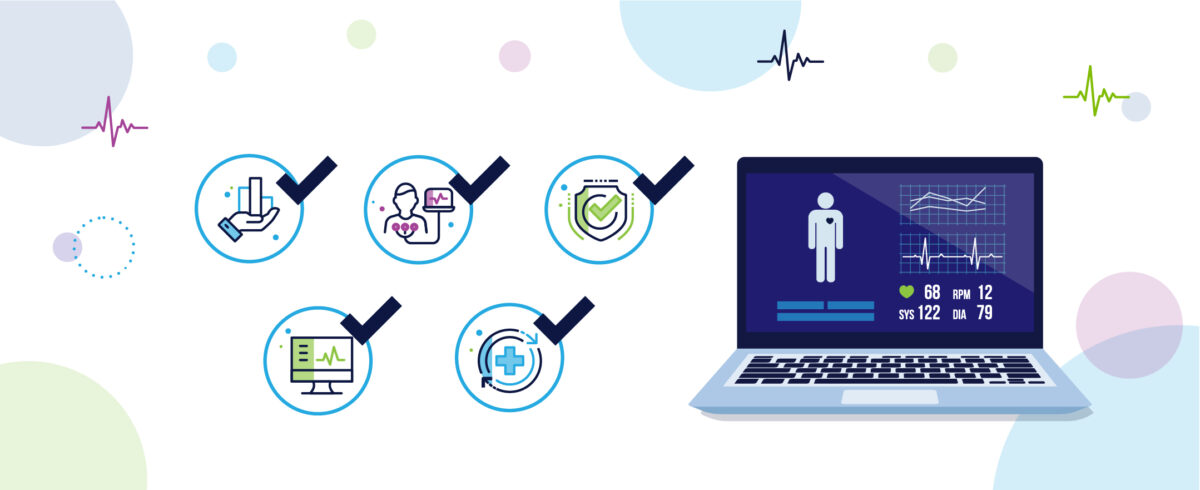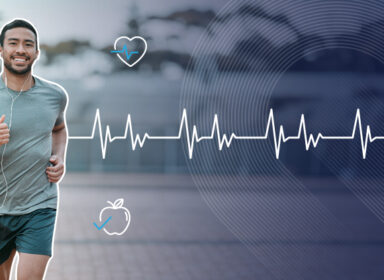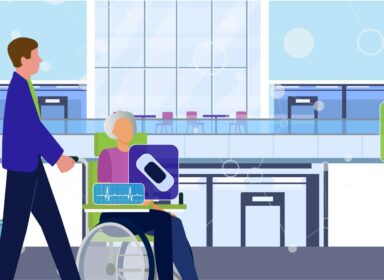Remote patient monitoring’s (RPM’s) long-term role as a pillar of healthcare has matured. The virtual care proof-of-concept initiated by the pandemic proved its merits, giving birth to a hybrid model that is predicated upon more continuous visibility—not just in support of the care that is delivered virtually, but in support of the care that is delivered everywhere. And RPM is poised to deliver.
According to Research and Markets, the global RPM systems market is projected to be worth over $1.7 billion by 2027, up nearly 128% from the current market of $745.7 million.
As remote patient monitoring expands its applications and strengthens the precision with which it measures a variety of indicators, a growing number of clinicians are indeed recognizing its value. A survey by the American Medical Association found 20% of physicians said they used RPM in 2020—double the number reported in 2018. Since then, adoption has continued to grow. Meanwhile, the voluntary adoption of recreational remote monitoring devices has reduced friction around patient adoption to an all-time low. Insider Intelligence estimates that 70.6 million US patients, or 26.2% of the population, will use RPM tools by 2025.
There are a wide range of medical applications where RPM can be leveraged as a valuable tool, including immunology, internal medicine, endocrinology, neurology, pulmonology, and—most critically for the millions of Americans with heart disease—cardiology.
All of these exciting applications of RPM, however, begin with the adoption of a dynamic virtual telemetry platform. The right platform is central to a provider’s ability to collect data reliably, securely, and with a level of precision that supports timely and effective interventions. But the influx of entrants on the RPM scene can make it hard to determine which platform will best support the needs of patients and providers. This blog post will explore five key criteria to shape your search for the ideal virtual telemetry platform.
Support for a Full Range of Acuity
As providers rely on remote patient monitoring for increasingly complex use cases, they require a platform that is capable of seamlessly measuring a full range of patient data—from the simplest to the most complex. In other words, the low-acuity beginnings of RPM are long gone.
A virtual telemetry platform made for the future must be able to support a full range of acuity, including complex, hospital-grade monitoring from anywhere. From high-acuity hospital-to-home monitoring to low-acuity on-the-go arrhythmia detection, look for a platform that offers a full suite of virtual telemetry solutions that can be adapted to any level of complexity and precision.
Frictionless for Patients
Remote patient monitoring cannot realize its full potential without patient adoption. While consumer adoption of medical wearables and other remote monitoring devices have reduced barriers to RPM, patients are still somewhat hesitant around the adoption of new medical technology.
Encouragingly, recent research shows that patients have become more open to health tech, particularly RPM as it affords them greater autonomy over their health care options and data. When choosing virtual telemetry technology, make sure to look for a platform that minimizes friction and maximizes adoption by mitigating learning curves, extra wires and clunky equipment, and the need to trek back and forth to the office just to transmit the data. The ideal platform should offer devices that are easy to understand and operate with nothing more than an internet or mobile connection.
Integrates with Diverse Devices and Systems
Cardiology is a centerpiece of RPM, but it isn’t the only aspect. Look for a platform that extends the same high quality data across a diverse range of peripherals to provide a total picture of patient health. These can include blood pressure cuffs, oximeters, scales, and variety of other medical devices. Remember that the value of RPM crosses disciplines. According to a survey by the American Medical Association, of physicians using RPM, one-third were specialists, led by cardiologists (63.3%) and then endocrinologists and diabetes care physicians (41.6%).
No matter the peripheral, the ideal platform must transmit patient data continuously, generate detailed reports, and deliver essential information in a way that is interoperable with a provider’s core systems and technologies. Choose a platform that will work effectively with your solutions to maximize efficiency, continuity, and insight.
Provides All Available Data
There should be total transparency and accessibility between a provider and their patients’ data— particularly in cardiology, where non-event data has proven critical for accurate and timely diagnosis. Having complete control over device and data settings with full visibility into every heartbeat is essential to realizing the full benefit of your virtual telemetry platform.
Make sure to look for a platform that not only delivers all of the data, but also analyzes it and makes it actionable through AI-assisted analysis. AI can empower data-driven decisions to evaluate disease progression or select the most appropriate treatment for a cardiac patient. The right platform will also allow providers to tailor each device’s monitoring and recording settings to individual patient data specificity levels. Customizing the platform to each unique case allows you to access all of the data you need in a way that makes sense for each and every patient.
Known for Quality and Security
While many of its applications are novel, RPM is not brand-new technology. Rather, its fundamental capabilities have been available for a few decades. A study published back in 2005 detailing the clinical benefits of RPM showed that hospital-at-home care resulted in patients having a shorter length of stay—3.2 days versus 4.9 days—and fewer overall complications. Impressive results like these have only become more pronounced in recent years.
The 2020s have seen a flurry of new entrants in a race to capitalize on the recent growth in virtual care. Some of these entrants tout their innovation, but this innovation mustn’t be a substitute for a proven track record marked by quality and security—particularly when it comes to sensitive patient health data. It is critical to look for a platform that couples a spirit of innovation with proven quality, high-fidelity data, and rigorous security controls. Providers must be able to rely on an RPM device to provide them a full picture of patient data—and not all devices are created equal. Make sure to choose a virtual telemetry platform with a strong, secure connection to monitor patients continually, without data gaps, drops, or compromises.
The Right Platform Provides Limitless Opportunities
Choosing the right virtual telemetry platform is the starting line for a dynamic and future-forward RPM strategy. InfoBionic’s MoMe™ ARC Platform is designed to support a full range of virtual telemetry needs and deliver the quality, precision, and insight needed in today’s hybrid care landscape. From high-acuity monitoring post-discharge to lower-acuity monitoring for preventative care, the platform offers a full suite of virtual telemetry solutions that can be fully configured to any provider’s model and any patient’s needs.
Contact us to learn more about how to select the right platform for your RPM strategy.


